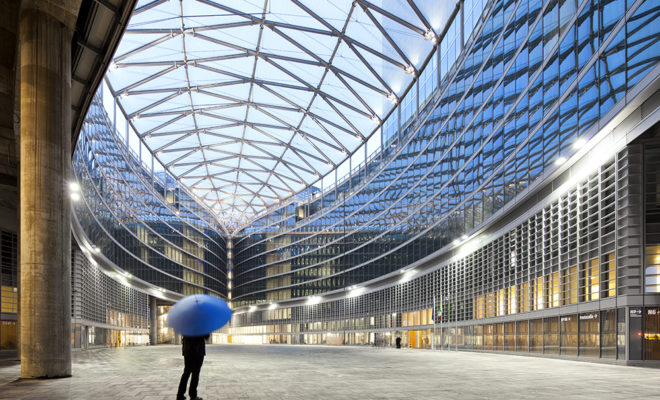 Palazzo Lombardia, Milan, 2013. FERNANDO GUERRA PHOTOGRAPH.
Palazzo Lombardia, Milan, 2013. FERNANDO GUERRA PHOTOGRAPH.
Architecture
In a New Book, Henry N. Cobb Reflects on his Seven Decades in Architecture
Henry Cobb, who once described himself in a 1985 Harvard lecture as “an architect who can make no claim to scholarship,” belies this self-abnegation on every page of this volume. His words here are every bit as carefully considered as his works are.
You can’t sum up Cobb’s varied career easily—spanning from Place Ville Marie in Montreal to the John Hancock Tower in Boston to the National Constitution Center in Philadelphia—and neither does he. His accounting of his work is relentlessly aware of the conceptual contradictions of architecture: a profession that is engaged with theory but cannot exist purely in the mind, one that is frequently building structures that are entirely private in use but at the very least serve as stage curtains for the public realm, one that cannot ignore its own history but must also advance beyond its mere re-creation.
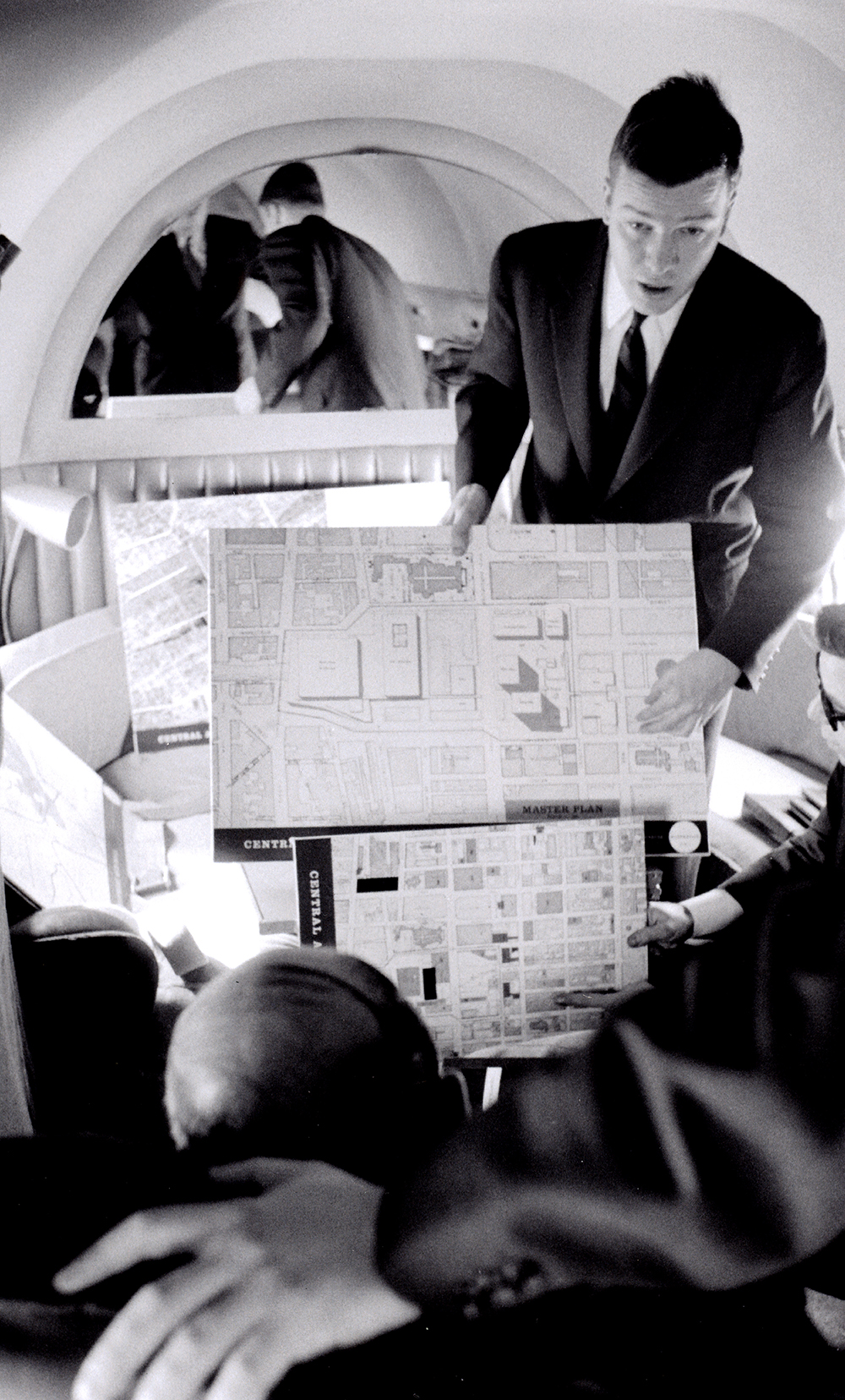
Henry N. Cobb and William Zeckendorf Sr., 1956. CHARLOTTE BROOKS, LOOK MAGAZINE PHOTOGRAPH COLLECTION, LIBRARY OF CONGRESS.
The book’s sequence is chronological, with the largest portion consisting of a long conversation with Paulo Conrad Bercah (principal at C-B A—Conrad-Bercah Architects and a design critic at the Harvard Graduate School of Design) interspersed with Cobb’s accounts of his own works and transcriptions of lectures, roundtables, and discussions from across the length of his career, concerning topics that vary from his partnership with I.M. Pei and Ingo Freed to the character of brick, skyscrapers, and architectural education. He is a lively and wide-ranging narrator, and his opus, Henry N. Cobb Words & Works 1948–2018: Scenes from a Life in Architecture, is filled with references ranging from Piranesi to Paul Valéry all the way to Pig Pen from Peanuts.
Cobb’s story begins with Gropius at Harvard: “I was the beneficiary, or depending how you look at it, victim of an ideologically driven pedagogy.” His early work was obviously indebted to high modernism; he describes his Place Ville Marie as “a body by Corbusier decked out in Miesian drag.”
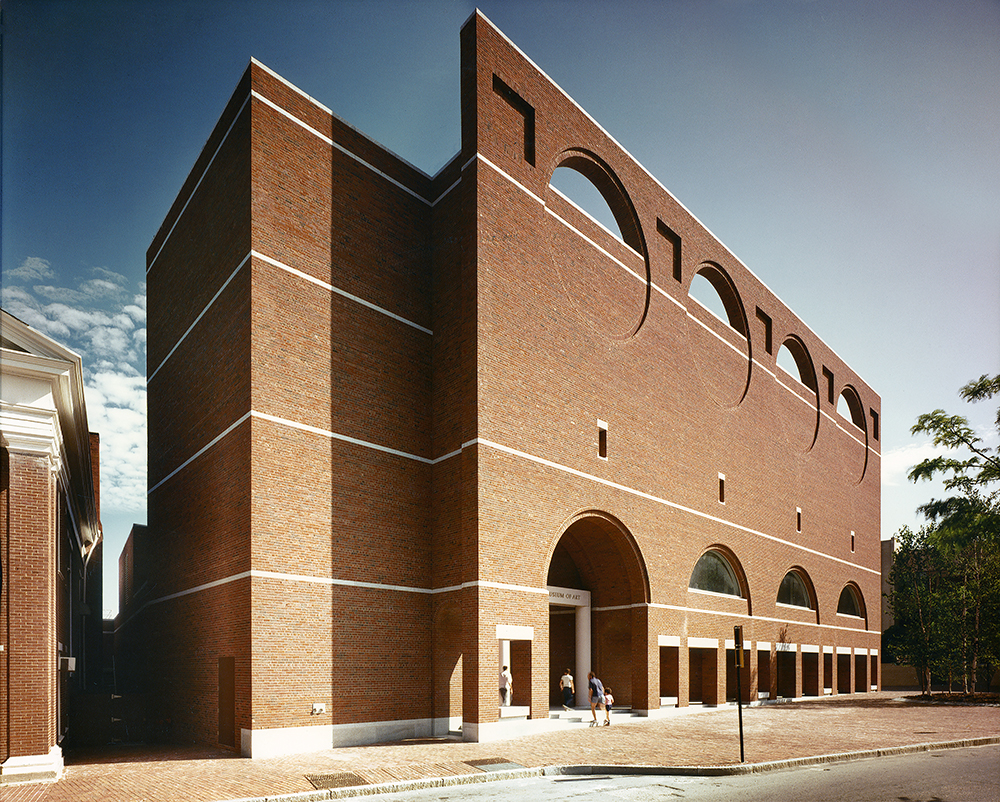
Portland Museum of Art, Maine, 1983. STEVE ROSENTHAL PHOTOGRAPH.
His architecture obviously shifted along the way and became considerably more attentive to historical influence: the Portland Art Museum introduces inspiration from Francesco Borromini to Sir John Soane and an embrace of once-taboo facadism. And yet there was no easy subsequent historicist or postmodern phase to Cobb.
His John Hancock Tower was a dedicatedly deferential building but one whose gesture to Henry Hobson Richardson’s adjacent Trinity Church eschewed typical strategies of material similarity or imitative massing or anything of the sort. The answer to masonry Romanesque was a glass notched rhomboid. He is alternately proud and ambivalent about it, sure that a complementary gesture was necessary but uncertain if it undermined the distinct character of the building itself.
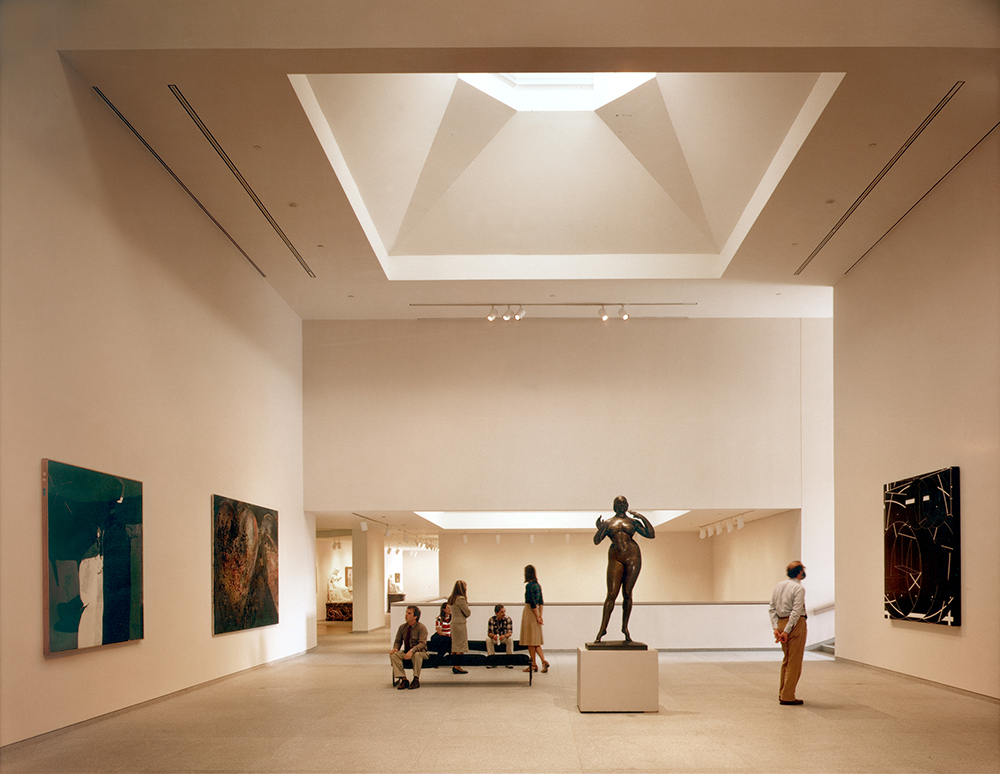
Interior of the Portland Museum of Art, 1983. STEVE ROSENTHAL PHOTOGRAPH.
Cobb’s journey beyond simple modernism involved not just trips into historical influence but numerous forays into more complicated higher geometry, to buildings shaped by cosine curves, conoids, and conical incisions. Cobb doesn’t just use these methods, he thinks deeply about them. Fountain Place in Dallas is a complex “metamorphic tower” whose appeal and dynamism are immediately apparent at sight. It wouldn’t be atypical for an architect to design such a thing and then explain it either simply in sculptural or practical terms. Cobb is not content with that, instead embarking on an incisive ontological distinction between “folding” and “bending” in architecture, which serves as a musing on the frequently duplicitous nature of the curtain wall in many buildings. Fountain Place might seem to fold, but “folds can occur only within and not between the elements that contain the surface to be folded.” The building, he finds it important to establish, “bends”—it is internal muntins that shift its surface and glass panels that create the illusion of seamless architectonic folds. This might not sound interesting until you read it, but it’s but one of numerous examples of the extraordinary thoughtfulness that characterizes Cobb’s thinking about his own work. He compares Fountain Place to a sculpture in its conception but then offers the caveat that he’s not sure if that’s a comparison that should please an architect.
Cobb is never engaged in the sort of self-celebration that would be his right: his is an interrogation of his own work to rival the most incisive observer—a builder this adept at thinking about his own buildings will enrich your understanding not only of those he designed but of countless others as well.
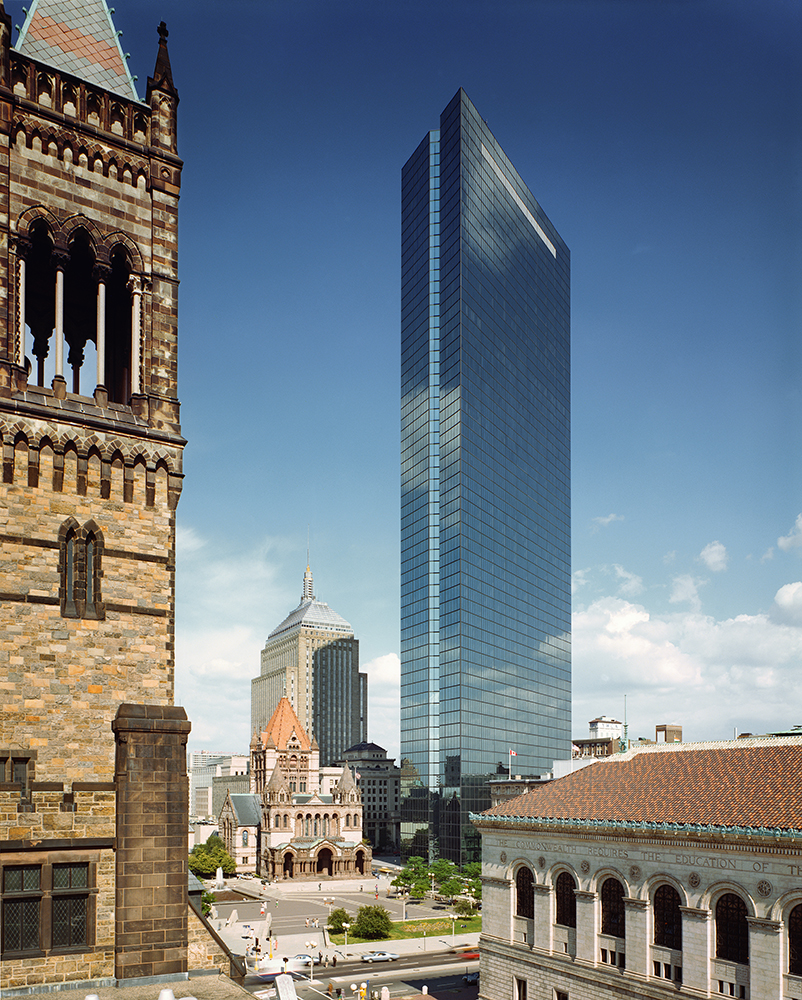
John Hancock Tower, 1976. GORCHEV & GORCHEV PHOTOGRAPH.












